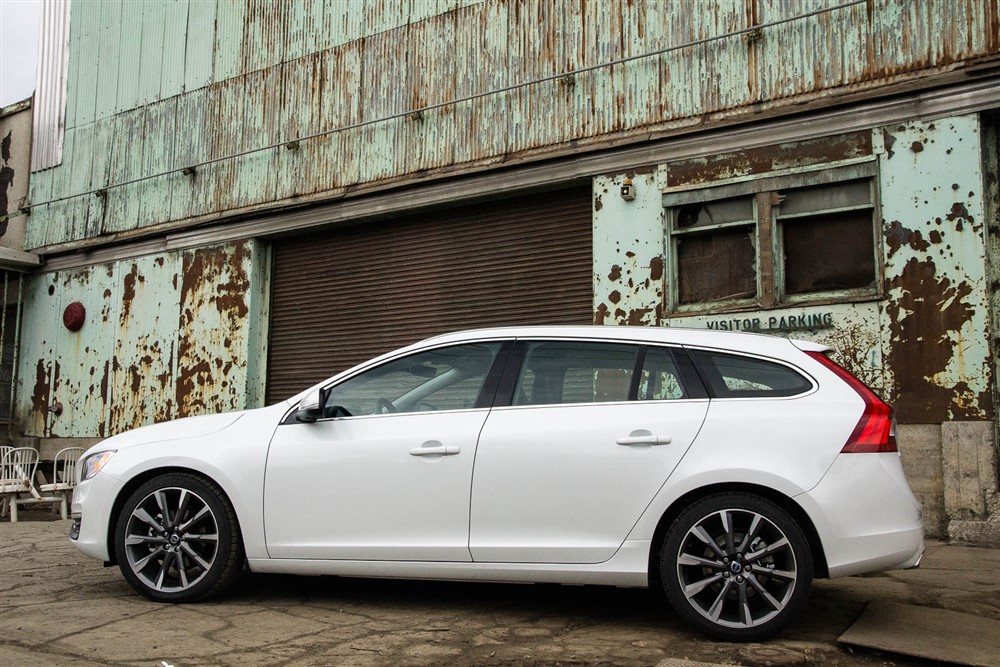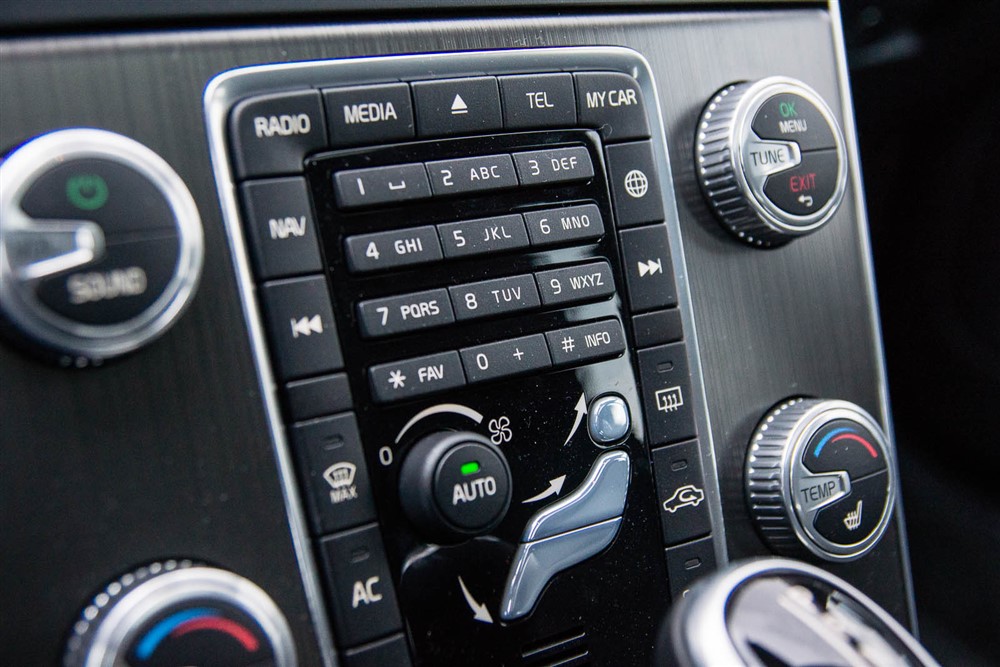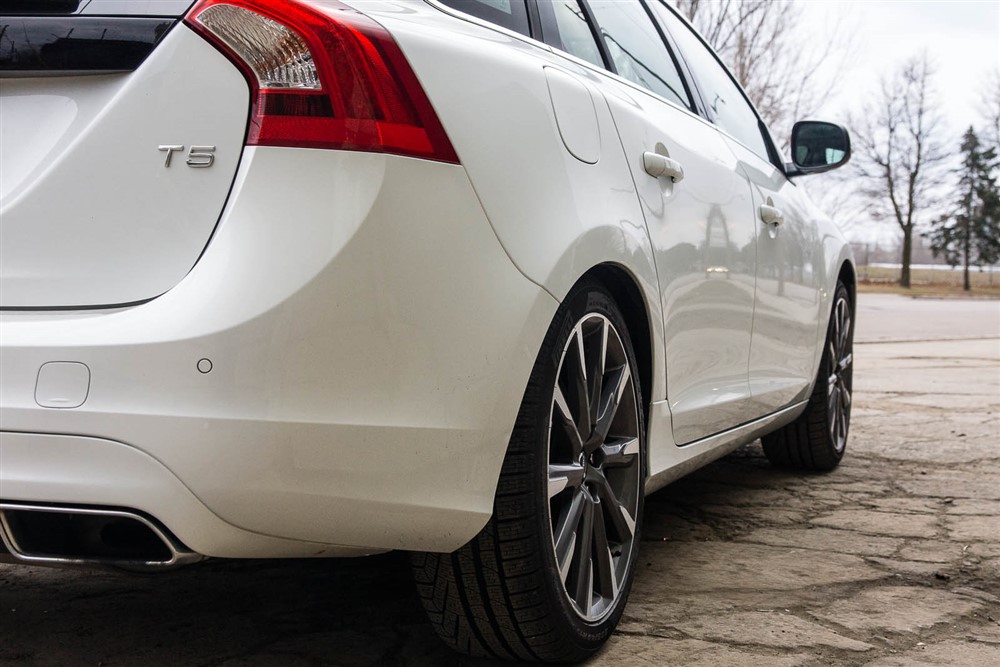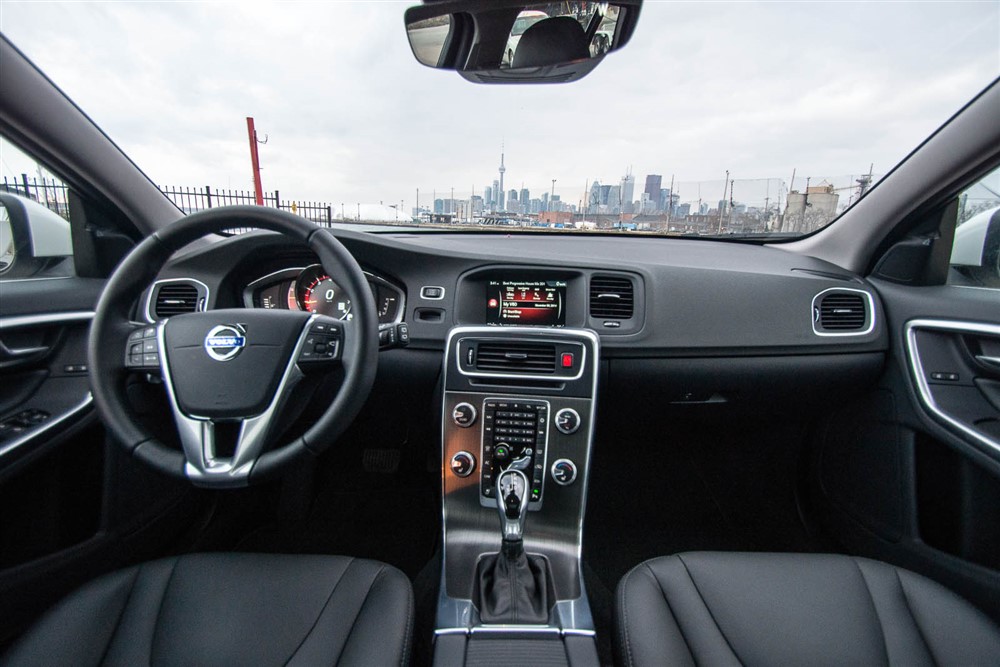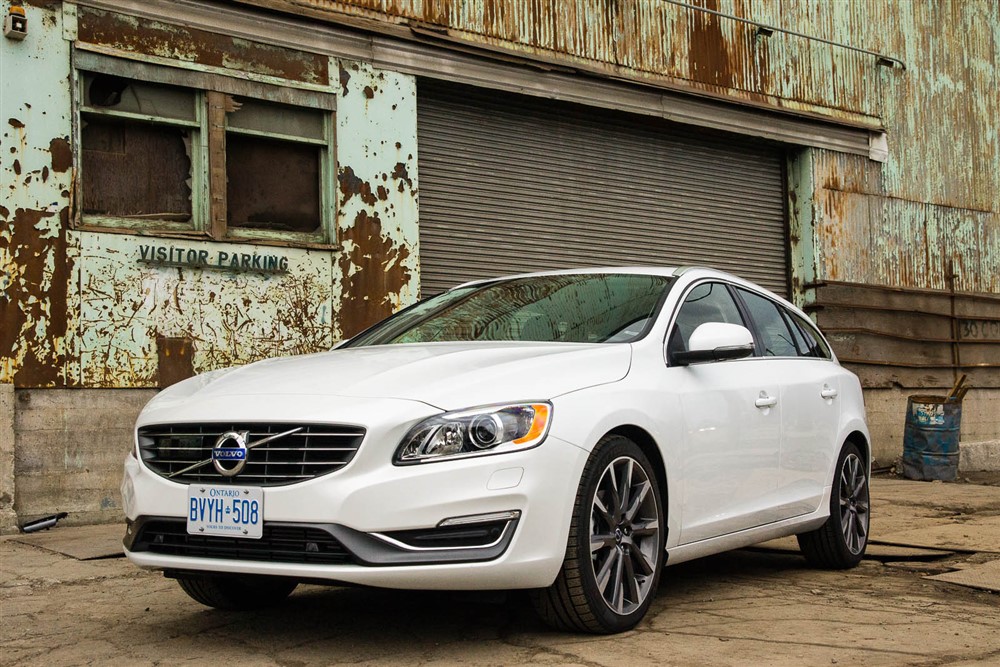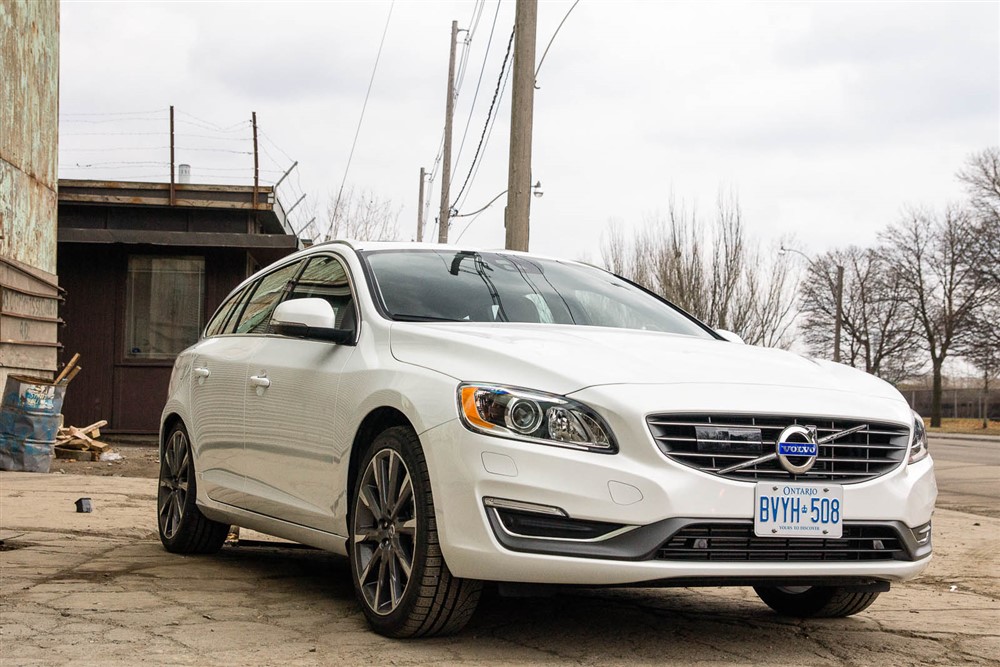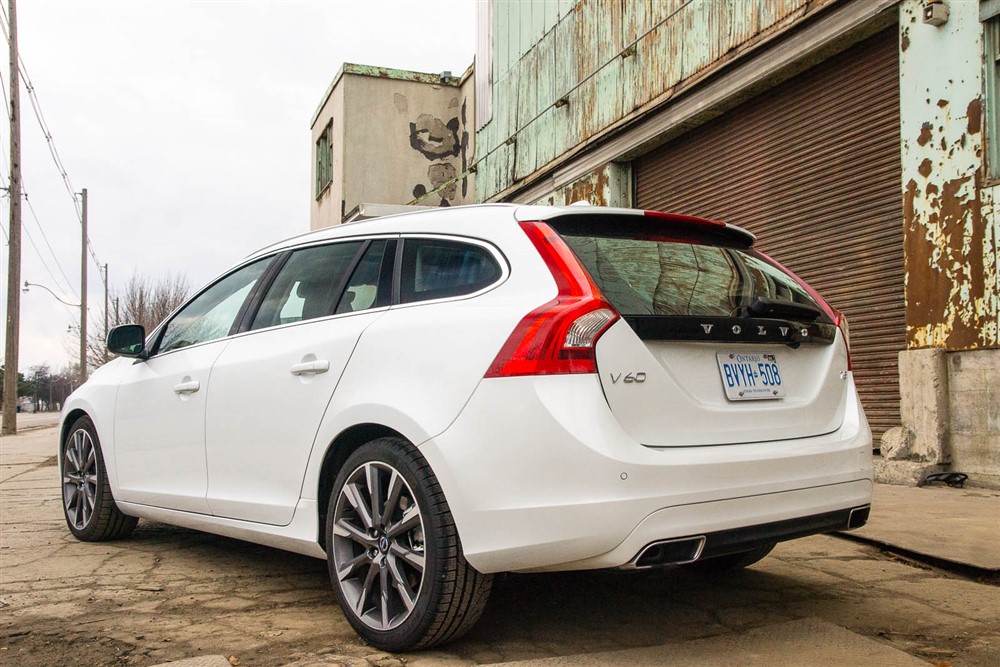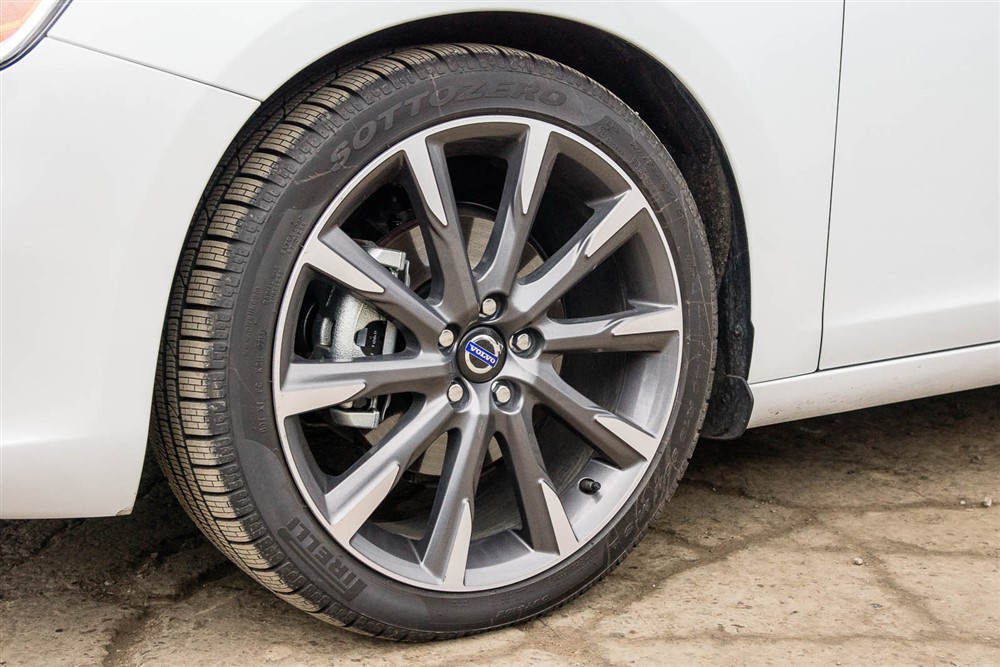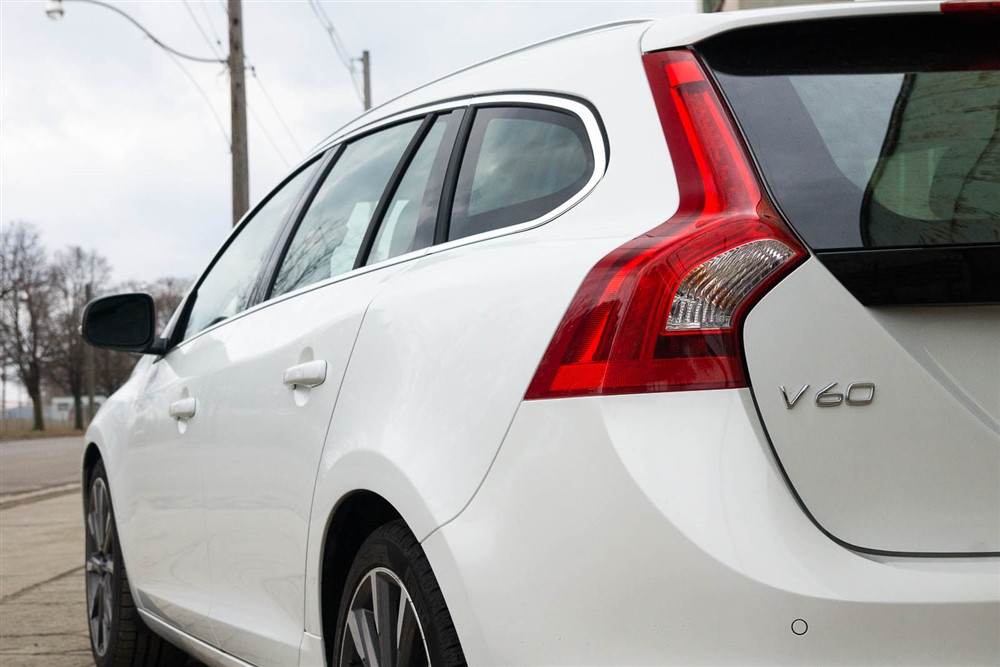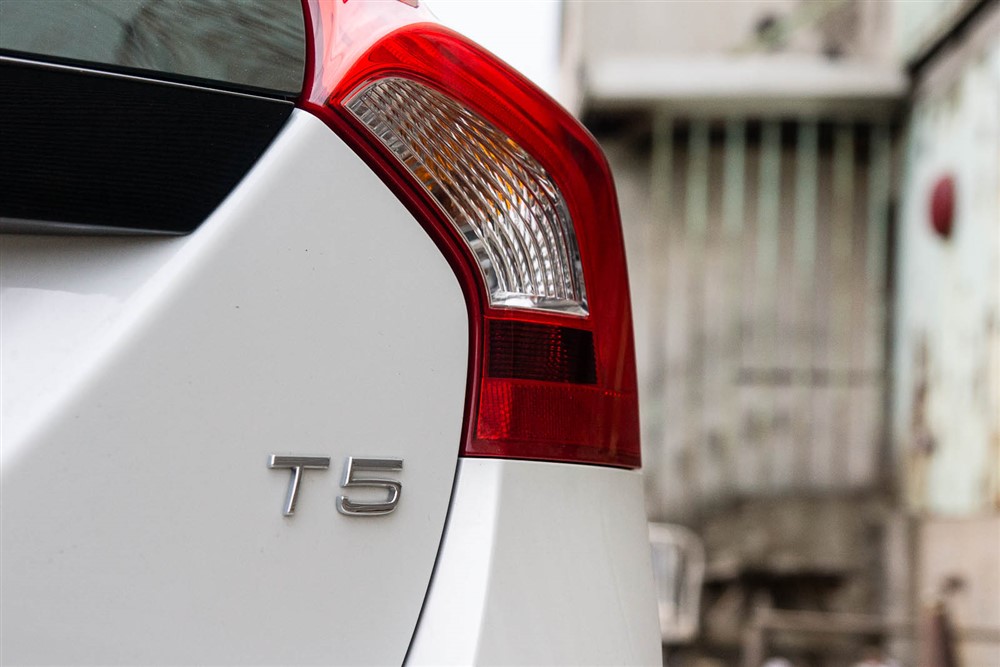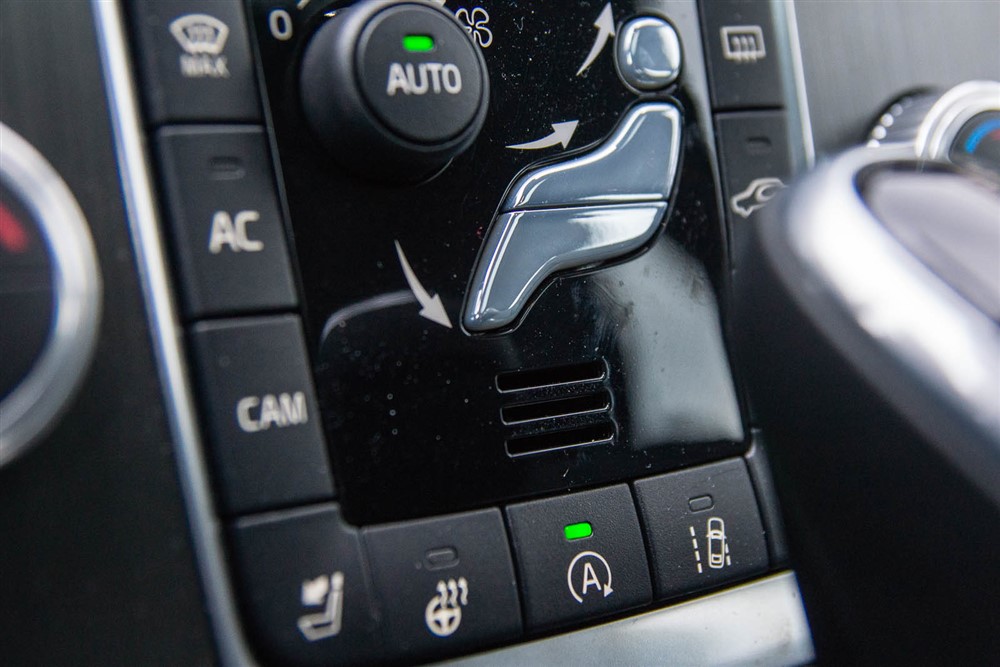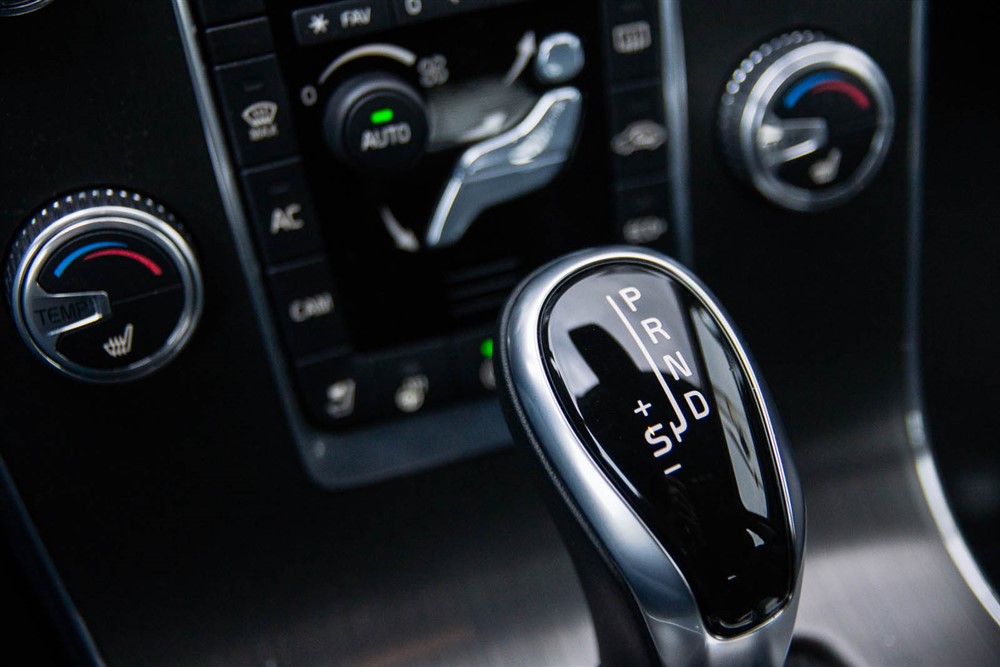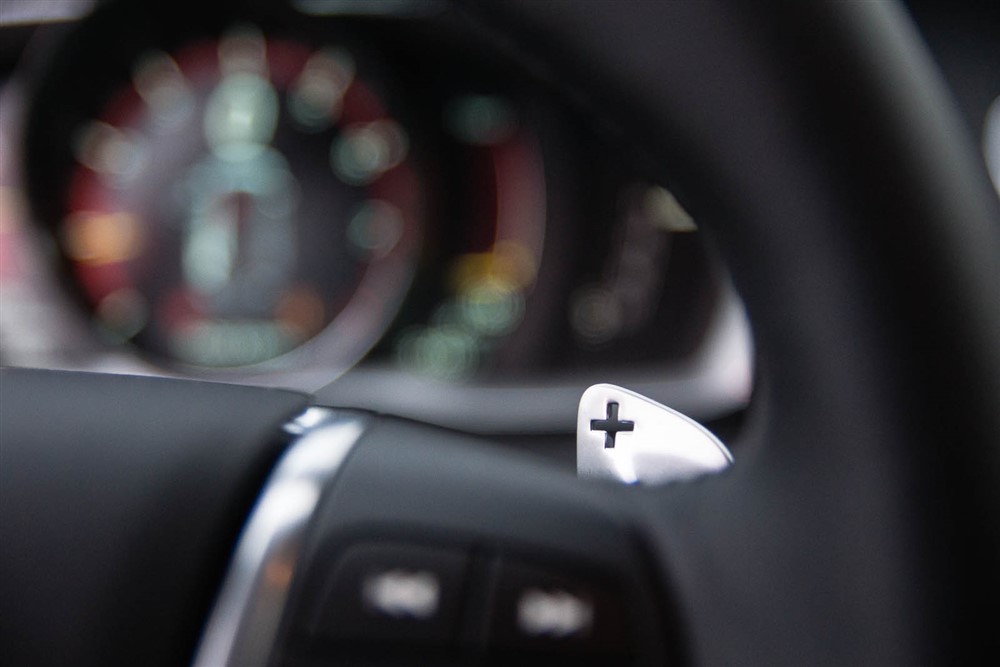Volvo has been in the business of wagons for as long as many can remember. The lovable turbo-bricks of the 1980s have gone on to define the image of what a Volvo should be. The square two-box designs many grew up with quickly became “uncool”, and made way to the crossover utility craze we’re now seeing. As uncool as traditional wagons may appear, it’s hard to deny their blend of usability, driving dynamics, and overall simplicity. Automotive writers and those residing on the Internet are simply grateful that an honest-to-goodness wagon still exists in the Volvo V60. I picked up a 2015 Volvo V60 T5 Premium Plus, with the new Drive-E designation for the week.
Introduced for the 2014 model year, the V60 (based on the S60 sedan) largely retains its roots from the second-generation S60. A new front-end (from the A-pillars forward) dramatically changes the overall look of the V60. The new headlights make for a much more cohesive look – I’ve always thought the pre-2014 styling was a little awkward, with the separated daytime-running-light module flanking the radiator grille. The side profile of the V60 is a classic long-roof wagon style, but the rising window sills towards the rear infringe on visibility somewhat. The rear mimics the well-known Volvo style, and Blacked-out rear glass surrounds and chromed exhaust finishers integrated into the tailpipes complete it.
Overall, the V60 is a handsome vehicle – a design I prefer more than the S60 sedan. The stubby rear deck of the S60 makes it look smaller than it actually is (usually a good thing), but I find the two-box design of the V60 more attractive. My particular tester, equipped with the Sport Package, rides on a set of very attractive 19-inch “BOR” aluminum wheels, with 235-section tires. Who knew a wagon could look this good?
Cars that hail from Sweden have been known to provide some of the most ergonomically-correct interiors in the industry. The V60’s heated leather seats provide perfect support, and the good driving position allow for a comfortable long-distance cruiser. The trademark “waterfall” centre console returns, providing a nice brushed-aluminum contrast to the mostly black interior.
I find the V60’s interior to be a little less “spartan” than the equivalent BMW 3-Series interior. Second row accommodations are actually a little tight on knee-room. However, the rear cargo area behind the second row is simply massive considering the external footprint of the V60. It is easily comparable with mid-size crossover utility vehicles, and the low load-floor is great for loading larger items. I happened to end up at our favourite flat-packed Swedish furniture chain. Already carrying some Black Friday goodies, I picked up some more furniture and threw it all into the back of the V60. I did have to remove the privacy cover, but everything did fit with the tailgate closed. Impressive stuff.
At the top of the centre stack is the seven-inch Volvo Sensus multimedia interface. My particular car was not equipped with satellite navigation, however the same screen is used to control the media, telephone, and display vehicle status. While I’m a fan of knobs and buttons in automotive user interfaces, the Volvo Sensus system proved to be a little dated in the speed of its operations. Like in many recent Volvos, in order to deactivate the traction and stability controls, one must dig deep into the menu system and enable the DSTC Sport function, denoted by a single check-mark box. The system works overall, but lacks the polish and speed of some of the systems provided by BMW, for example.
The 12-button number pad array is also a hold-over from Volvos past. With the prominence of Bluetooth voice integration, I never once found myself dialing numbers or selecting specific list items with the number pad. Remember the built-in corded car phones from the 1980s? While not as extreme, seeing the number pad right in the middle brings back some of those memories.
The Drive-E designation is new for this year, and joins the long-time T5 and T6 monikers seen on Volvos dating back to the 1990s. What Drive-E represents is the next-generation of powertrains, this time centred around a direct-injected modular four-cylinder design. Displacing 2.0L across the board, Volvo can add different technologies and power-adders in order to fit various applications, from compact executive cars all the way up to full-size, three-row utility vehicles. At the top end of the Drive-E range sits a turbocharged and supercharged (often referred to as twin-charged) 2.0L inline four-cylinder engine, engineered to produce big power in a small and efficient package.
Where it can start to get confusing is where this new Drive-E suite fits in with the existing Volvo lineup. In the past, T5 referred to a turbocharged inline five-cylinder engine, usually the base engine available in North America. The T6 trim represented a turbocharged inline-six cylinder engine, capable of producing more horsepower than the standard T5 engine. The interesting part here is that Volvo is managing to keep four, five, and six-cylinder engines in their lineup.
Now, this particular V60 T5 Drive-E is powered by a four-cylinder turbocharged (but not supercharged) 2.0L engine, good for 240hp at 5600rpm and 258lb-ft of torque from a useful 1500-4800rpm. This engine is paired up with a new eight-speed automatic transmission. However, as of now, this powertrain combination can only be offered in a front-wheel drive configuration. Checking that all-wheel drive option box relegates you to the older five-cylinder T5 engine. Further adding to the confusion is the fact that the fancy new twin-charged, four-cylinder T6 Drive-E engine is only available in the S60 sedan, but not the V60 wagon, also only in front-wheel drive guise. If you’re looking for big horsepower in the available V60 T6, you’ll have to opt for the turbocharged 3.0L inline-six, but with the older six-speed automatic with all-wheel drive. Confused yet?
Volvo really needs to simplify their powertrain lineup. The workhorse five-cylinder T5 engine is full of character, but is getting a little dated in terms of fuel efficiency and emissions standards. The six-cylinder T6 is really a sweet engine, but like the T5, lags behind the new competition by being a little thirsty for the power output provided. All-wheel drive (a long-time Volvo staple) needs to come to the Drive-E lineup, which is currently front-wheel drive only. I understand Volvo’s engineers are working diligently to bring better traction to their new powertrains. The latest-generation Haldex all-wheel drive hardware paired up with Volvo’s Drive-E engine and eight-speed automatic transmission should make for a very delicious recipe. The current year of major transition makes things a little unclear for prospective customers.
In practice, the engine sounds and feels like many competing turbocharged 2.0L engines from premium automakers. The easily-accessible torque peak low in the rev range helps move the V60 up to speed with good authority. The eight-speed automatic transmission does a good job staying unobtrusive and efficient – 100km/h in eighth gear runs the engine at less than 2000rpm. One thing worth noting: like other Aisin-built transmissions I see, it automatically selects neutral (N) when at a stop, in hopes of improving efficiency. It was a noticeable change – some will notice more than others. Selecting the Sport option on the gear lever keeps the transmission in gear and ready to go from a stop.
Volvo rates the V60 T5 Drive-E at 9.8L/100km in the city, 6.6L/100km on the highway, and 8.4L/100km in a combined cycle. I managed 10.5L/100km in mixed (mostly city) driving. All of the new Drive-E powertrains feature an active start-stop system that shuts the engine off at red lights, improving city efficiency. I find Volvo’s start-stop system works a little better than others, being quick to respond when your traffic light turns green again. The V60 will accept 67.5L of premium fuel.
In terms of pricing, the Volvo V60 comes in at a little less than some of the German competition. My test car was well-equipped, with cool gadgets like adaptive radar cruise control, but was still missing a few things such as satellite navigation (part of the Platinum trim). The base price for a V60 T5 Drive-E is $42,800. The $1,350 Climate Package adds heated rear seats, steering wheel, as well as a heated windshield. The $1,500 Technology package adds a great deal of safety and assist systems, and the $1,200 Sport package adds steering wheel paddle shifters and the 19” wheels. With a few more options, the price as tested comes up to $49,650. Satellite navigation is quickly becoming available on more mainstream cars from different manufacturers, so for Volvo to not include it, is a little bit of a letdown.
The V60, like all new Volvos, come equipped with a safety suite of alphabet soup: ABS, HBA, OHB, RAB, FBS, CTA, DAC, the list goes on. Many of these features are designed to be unobtrusive and will only intervene when occupant safety is at risk. One thing I did get a chance to try out is Volvo’s City Safety system: a parking arm gate that I regularly see is programmed to operate in a consistent manner every day. In most cars, rolling through as you approach the exit is a normal occurrence. In the V60, however, it detected an obstacle, abruptly applied the brakes, and brought the car to a full stop. It was unexpected at first, until the instrument cluster had informed me of what had just happened.
The Volvo V60 continues the goodness that is the station wagon. There’s lots of space for your stuff, fuel efficiency is decent, and good driving dynamics all contribute to a formula that many will find very attractive. The powertrain in the V60 T5 Drive-E shows a lot of promise in how good the new 4-cylinder feels, but Volvo needs to simplify the powertrain choices available. Once that happens, I feel Volvo will have a very well-rounded V60 and S60 lineup that will appeal to those who can still understand why Sweden is still very much in the automaking game.

